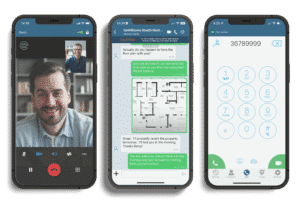Representatives from leading UC companies discuss conversational analytics

1. What are the benefits of conversational analytics for enterprises?
Attilio Licciardello, General Manager and Founder at Mida Solutions: “Constantly analysing business conversation helps companies to understand how to improve their communication management and increase customer satisfaction: the information obtained from this analysis are relevant to discover service weakness and draw points for reflection on how to turn them into opportunities.
“Working with this data is useful to better guide the strategic actions to enhance customer experience, understanding if there are peaks that are difficult to manage, and how agents can increase their productivity in handling conversations.
“In a big company, conversational analytics are relevant also to analyse the traffic for each branch, allocate budgets where needed, and plan investments on what results from a more profitable service, taking data-driven actions to maximize ROI.”
Andy Lark, CMO at Dubber: “So much of what gets said is lost forever once a call is hung up – whether it be voice, video or chat.
“With the majority of all enterprises working in hybrid work environments, managing corporate culture, tracking employee and customer experience as well as improving productivity, are at an all-time strategic high.
“By capturing conversational data across the enterprise, you are able to reveal crucial insights proactively. Using sentiment AI, keyword tagging and automated alerts, businesses are able to quickly uncover where gaps, improvements and successes are showing up and pivot accordingly.”
Denise Celaya, Cloud Channel Account Manager at Avaya: “Avaya Conversational Intelligence offers real-time speech analytics for SMB and Enterprise bringing traditional back-office post-call analytics into the current conversation with agents and customers on the live line. Ability to change call outcomes.
“Better CX. Better Agent Experience. It arms agents with real-time insights to province better service. reduce ACW with transcriptions of every call and call summaries. Business rules engine to automate repetitive tasks.
“Avaya Conversational Intelligence provides real-time speech analytics used to provide live insights to the business and the agent. It is able to impact call outcomes by the live reaction to customer needs.”
Shirmattie Seenarine, Director of Communications and Technical Publications at Deltapath: “Conversational AI is intelligence that can be turned into coachable opportunities for staff across many departments from Sales to call centres. Whether companies are capturing text, speech, voice, or sentiment analytics, they can use the enormous amount of data to identify communication gaps and create communication training programs to support their employees.
“Likewise, if you are a business that uses phone scripts like so many do, conversational AI can uncover how well your employees follow scripts, whether their emotions mirror the script, and even determine whether it is time to update the language in your scripts and develop other training material such as connecting the right emotions to a script. Ultimately, with the help of conversational AI, the right phone scripts with the right training behind it, can instantly and proactively transform a negative situation to a positive one in record time during a conversation with a customer.
“Lastly, conversational analytics is a great way to capture all the powerful and positive feedback your customers are leaving. Customer feedback can be used on a company’s website or introduced into marketing campaigns to bolster trust with prospects. Similarly, product feedback can result in new features and functionality being added, sending your customers a clear message that your company is listening to its customers and delivering on their needs.
2. How do conversational analytics compare to traditional customer feedback tools, such as surveys?
Attilio Licciardello, General Manager and Founder at Mida Solutions: “Collecting customer feedback is always an important activity to understand how people perceive it, but this information is not so easy to get and what we get out of it is not fully impartial.
“People sometimes are not likely to compile surveys by sharing their opinion and sentiment, and that’s why companies should rely on communications analysis to plan data-driven strategic actions.
“Conversational analytics provide valuable insights and reports, useful to optimize customer service.
“Understanding, for example, how many requests are successfully handled at the first call and how many prematurely calls are hanged up is important data that suggest how the agents are performing.
“Conversational data are essential to improve communications management and increase service quality levels. In a broader perspective, this activity positively influences companies’ business growth.”
Andy Lark, CMO at Dubber: “Surveys are created to provide specific insights sought after – narrow view – vs broader insights which are missed due to that specific data set.
“Conversational analytics can be captured from all conversations across multiple mediums and all departments, where a myriad of insights can be drawn and filtered.
“What does my overall customer sentiment look like, where are the least happy conversations occurring and about what?
“How often is a competitor’s name being mentioned and is this a lost revenue opportunity?
“Are there training opportunities within teams – what does great look like vs what needs improvement?
“What new product opportunities are surfacing?
“Customer tone, sentiment, keyword tagging and workflow management not only reveal deeper customer insights but also make them immediately actionable – not time-shifted narrow information that can’t be tracked back into the company specific to where improvements or acceleration should occur.”
Denise Celaya, Cloud Channel Account Manager at Avaya: “Avaya Conversational Intelligence provides real-time speech analytics used to provide live insights to the business and the agent. It is able to impact call outcomes by the live reaction to customer needs.
Shirmattie Seenarine, Director of Communications and Technical Publications at Deltapath: “Conversational analytics is a great addition to the toolbox. However, one should not discredit traditional tools like surveys. From a market research and data gathering perspective, the beauty of traditional surveys is you can directly ask customers what they are thinking about anything from a product to customer service.
“The traditional survey is much more focused, and some can call it rigid, but they can yield just the information you are seeking. In the end, conversational analytics and traditional tools can co-exist in any company.”
3. What are the challenges involved in getting companies to adopt conversational analytics?
Attilio Licciardello, General Manager and Founder at Mida Solutions: “The big challenge is to increase the awareness of how relevant the data of the customer service department is.
“Companies should understand that conversational analysis is an opportunity for their business growth: it helps them know how to improve their service, making the people with whom they interact more satisfied.
“Mida has understood the huge potential of UC data and would like to convey the importance of this strategic activities by proposing dedicated modules of analysis, with ready-to-use and customizable templates, in conjunction with the UC services. We would like to make it clear it helps increase customer service productivity and quality level.”
Andy Lark, CMO at Dubber: “Historically this sort of data hasn’t been available to enterprises. Either it couldn’t be collected broadly and stored in one place securely, or it was only being gathered for potential legal actions or dispute resolution and packed away in various places making it difficult to retrieve quickly. Additionally, shifting the historical belief that call recording just belonged in the call centres can be a tall order.
“That legacy which has been left behind can make it difficult to expand the thinking of what conversational data is and what it means in terms of how it can change the entire trajectory of a company’s success or failure.
“What was a very specific targeted conversation has now become relevant across the entire enterprise.”
Denise Celaya, Cloud Channel Account Manager at Avaya: “Some challenges include leveraging business data to train NLU engines.
“Customer data is private and encrypted in flight and at rest. ensure customers that their data is always protected.
“Customers also do not understand all of the live insights that we can provide and the power of the data we use.”
Shirmattie Seenarine, Director of Communications and Technical Publications at Deltapath: “Privacy is definitely the biggest hurdle. While external customer-facing interactions are generally recorded (just think of contact centres/call centres for example that notify callers that they may be recorded. Being recording has become a common thing but perhaps not so from the employee perspective.
“Employees may be anxious and less reluctant to communicate honestly and openly if they are aware that every phone call will not only be recorded but also analyzed with potential escalations. They may then try to be as neutral sounding as possible to avoid triggering any alarms. This can really skew the information being analyzed.”
4. How do you see conversational analytics evolving in the future?
Attilio Licciardello, General Manager and Founder at Mida Solutions: “I think that conversation analysis will be more and more powerful, and ready to implement company business.
“In the future, all companies will ask us to buy UC service and call analysis software together. They will train agents to evaluate their KPIs periodically to enhance their performance to increase the quality level of the service.
“Analytics will also involve the customers’ sentiment toward a brand, sharing a wider overview of companies.”
Andy Lark, CMO at Dubber: “Efficiencies will be at the core of where see conversational analytics taking us.
“What if technology allowed your specific key actions, to be automatically captured and emailed to you when a meeting was over?
“What if key highlights of a meeting were itemized vs. the verbatim transcript?
“Taking this further, what if action items for people not in the meeting could be captured and routed to them automatically?
“And what if those actions immediately became tasks for the owners within applications such as Asana or Confluence?
“Recording voice data and pulling insights from it with AI/ML technology is the tip of the iceberg. Mobilizing, or bringing that data to life, is where we will see conversational AI moving.”
Denise Celaya, Cloud Channel Account Manager at Avaya: Self Agent Scoring (Gamification), using Live Scoring to compete with other agents, not to replace the human aspect but make it even more humanlike.
More fun, more competitive, and almost like a game aspect to scoring. For lack of a better term “keep it real”.
Shirmattie Seenarine, Director of Communications and Technical Publications at Deltapath: “It will cover all modes of communication channels, using Natural Language Processing (NLP) to analyze video, voice, and chats. Conversational analytics will also be used for compliance.”


